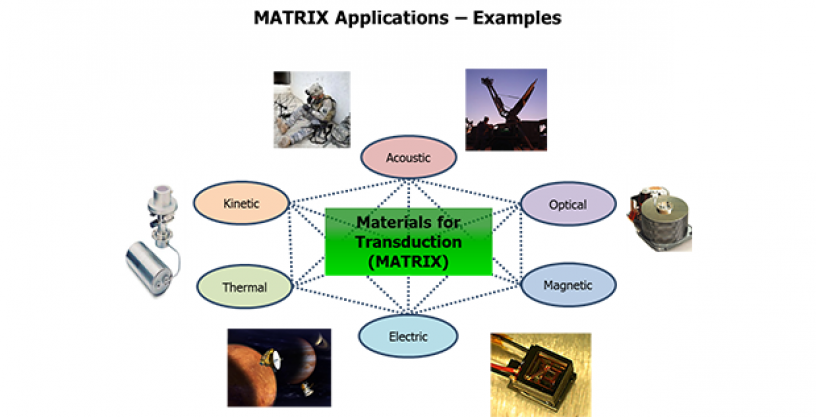
DARPA seeks novel materials to convert one form of energy into another for defense applications
Jan 7, 2015
Transduction involving the conversion of energy from one form into another is common in many military and space devices, such as communications antennas (radio waves to electrical signals), thermoelectric generators (heat to electricity) and electric motors (electromagnetic to kinetic energy). Research efforts to develop new transductional materials, however, have largely been limited to laboratory demonstrations and haven’t always resulted in new capabilities or significant size, weight, and power (SWAP) reduction for military devices and systems.
To address this problem, DARPA today announced the Materials for Transduction (MATRIX) program.
“Advances in materials have been key to achieving a wide range of critical, defense-related capabilities, but the development of novel, energy-transducing materials has been challenging, particularly in translating materials advances to the device and systems level,” said Jim Gimlett, DARPA program manager. “We aim to develop new classes of transductional materials that can be demonstrated directly in applications, and to advance innovative modeling and simulation tools that engineers can use to design systems that take advantage of these new materials. The goal is not just to design materials for use in devices; we envision developing materials that, because of their energy-transforming properties, are effectively devices themselves.”
MATRIX will take a systems approach that integrates state-of-the-art materials science, predictive modeling methods, and domain-specific expertise to rapidly validate and optimize new functional architectures that offer transformative defense-related capabilities.
Potential applications include:
- Thermoelectrics – Energy transfer, thermal management, and refrigeration
- Multiferroics – Enhanced sensors, actuation, micro-power generation, tunable RF and microwave field engineering
- Phase-Change Materials – Fast switching and sensor applications
Information on the MATRIX Proposers Day, scheduled for Jan. 23, 2015, is available here: http://go.usa.gov/t2YA.
###
Media with inquiries should contact DARPA Public Affairs at outreach@darpa.mil
